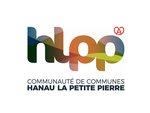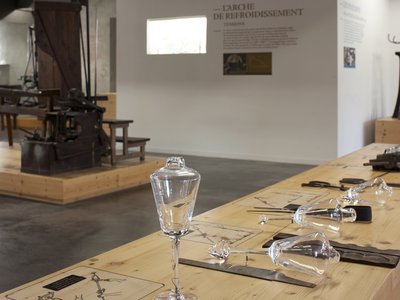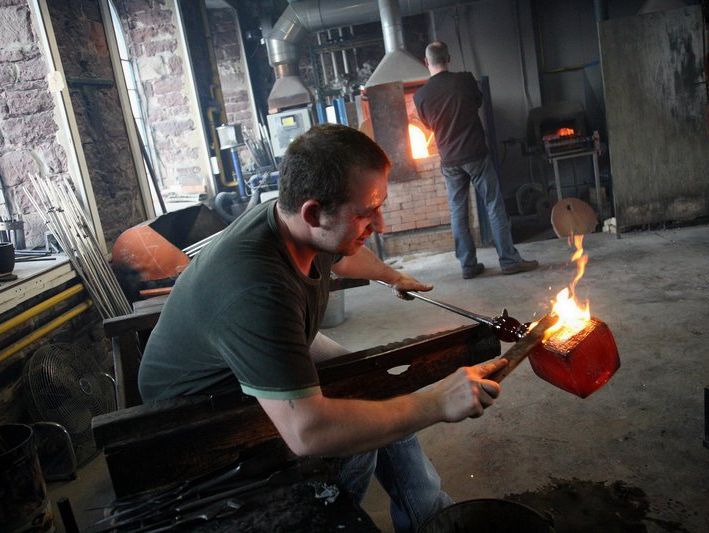
The glass and crystal loop
Description
From Place Émile Gallé car park, turn left into the Mairie street and continue along the cemetery street following the red ring.
Cross the D83 to get to Schieresthal street in front. At the end of the bend, take the forest path then turn right after the last dwelling to join the Coëtlosquet fountain then the Georgel Oak.
Continue on the path in front marked yellow cross that leads to Saint-Louis-lès-Bitche. A small path descending to the left makes it possible to catch the main street and to make a small stop at the garden of glassmakers. The path passes in front of the church of Saint-Louis and goes down to La Grande Place Crystal Museum Saint-Louis.
Continue on Goetzenbruck street (D37a) following the green disk. After the exit sign of the village, climb the path on the left.
In Goetzenbruck, go to the center of the village. Turn right on rue de Bitche (D37) and continue on rue d'Ingwiller following the yellow triangle towards the Stone of the Twelve Apostles. After the church, turn left into rue Saint-Hubert and follow the yellow triangle http://www.parc-vosges-nord.fr/Geotrek/trianglejaune.png to the Stone of the Twelve Apostles.
Cross the D37 carefully then go to the Colonne following the yellow cross and continue to the Meisenthal Glass Site. Return Emile Gallé square by the street of the town hall.
- Departure : Parking place Émile Gallé, Meisenthal
- Arrival : Parking place Émile Gallé, Meisenthal
- Towns crossed : Meisenthal, Saint-Louis-lès-Bitche, Goetzenbruck, Mouterhouse, and Wingen-sur-Moder
14 points of interest

Cascade des Ondines - T.Bichler  Geology
GeologyOndine Falls
Was originally called Wasserfelsen. At the top, you can discover an old wash house. The large retaining wall was built around 1860 during the construction of the Lemberg-Bitche railway line. From there, the stream flows on imposing sandstone slabs to form beautiful waterfalls, particularly impressive in winter. The thin stream of water forms at this level the very first beginnings of the Zinzel of the North.
 Castle-church-abbey
Castle-church-abbeySaint-Louis parish church
Built between 1897 and 1902 by an architect-conservator of historical monuments of Alsace, Charles Winkler, this pink sandstone church of a particular architectural style is of neo-Romanesque style. Its funding came mainly from the Manufacture and the Coëtlosquet family.
 Museum
MuseumCrystal Museum from Saint-Louis-lès-Bitche
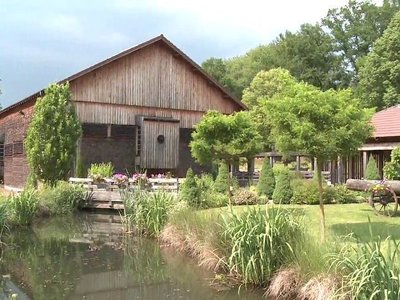
http://www.lorraineaucoeur.com  Historic Sites
Historic SitesSite of the Moulin d'Eschviller, Volmunster
The site of the mill of Eschviller proposes several facets of a natural and cultural inheritance.
Above all, it tells the story of a rural territory, its inhabitants and the way in which they have exploited and still exploit their natural resources. More info here.
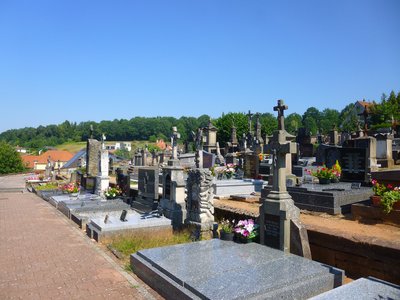
Certaines tombes du cimetière de Meisenthal sont sculptées dans des styles différents, certaines par les maîtres verriers. - PNRVN - A.Serylo  Small patrimony
Small patrimonyMeisenthal cemetery
This cemetery, located near the church of the Nativity of the Blessed Virgin of Meisenthal built in 1811, is one of the only cemeteries in the Pays de Bitche to have preserved a significant number of sculpted tombs of different styles, some of them even worked by master glassmakers.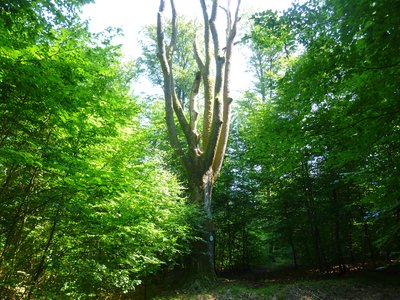
Chêne Georgel - PNRVN - A.Serylo  Flora
FloraOak Georgel
Or big oak
Château de Lancy  Castle-church-abbey
Castle-church-abbeyLancy Chateau
This private, troubadour-style castle with a park was built in the mid-19th century for the Lorin family, a shareholder in the Saint-Louis-lès-Bitche crystalworks. Louis Lorain and his son, who died in 1865, were directors of the Saint-Louis crystal factory. The castle, bought in 1902 by the director of the crystal factory and then expanded in 1906 a tower at the northeast corner. The chapel dedicated to Notre-Dame-des-Sept-Douleurs, was built in the middle of the 19th.
Fontaine du Coëtlosquet - PNRVN - A.Serylo  Small patrimony
Small patrimonyFountain of Coëtlosquet
Below a forest path is an old washhouse from 1788, consisting of two troughs carved into the rock and two washing boards. The steps, the low wall and the drainage channels are also made of sandstone. This washhouse is a spring created by the Coëtlosquet family, who ran the factory in Saint-Louis-lès-Bitche.
 Monuments and architecture
Monuments and architecturev
This boundary marker delimiting Alsace and Lorraine would have been built during the Napoleonic period. However, the base would date from the Gallo-Roman period. It was nevertheless partly destroyed during the Second World War.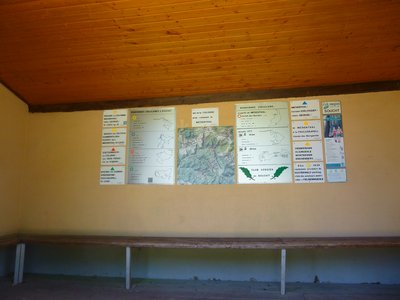
Abri de la Colonne de Soucht - PNRVN - A.Serylo  Refuge-shelters
Refuge-sheltersColonne Shelter
Shelter of the Column of Soucht
 Small patrimony
Small patrimonyStone of the Twelve Apostles
Or Breitenstein. A Christianized monolith of red sandstone, 4.40 meters high, located at the crossroads of important roads dating back to the Merovingian or even Roman period, it seems to have always had a role as a border marker. The calvary surrounded by the two Marys that surmount it and the twelve apostles date from 1787.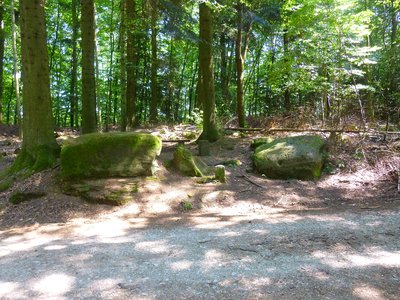
Les Trois Pierre - PNRVN - A.Serylo  Small patrimony
Small patrimonyThe Three Stones
Or Dreipeterstein. Located on the border between the Moselle and the Lower Rhine, the three red sandstone blocks bear the shields of the Duke of Lorraine, the Count of Hanau and perhaps also the Count of Nassau. Therefore, this place would have a very old border significance. Originally, the stones were a druidic altar.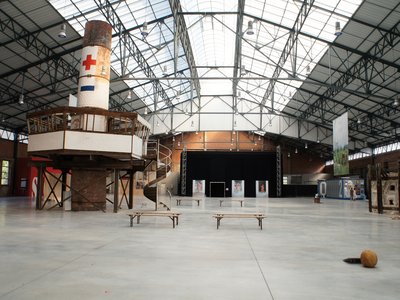
La Halle Verrière - M.Chérot  Expertise
ExpertiseMeisenthal Glass Heritage Site
The House of Glass and Crystal represents the evolution of this art giving its noble name to Pays de Bitche.A symbol: This house was the original glass hall where Emile Gallé, head of the School of Arts at Nancy, started working with glass, making Meisenthal the cradle of Art Nouveau glass.Today, the museum is in memory of the local glass industry. After an audio-visual show, the guided visit shows you the techniques used in the ‘technical room’, followed by a visit to a sumptuous collection of Art Nouveau glass, notably masterpieces signed by Emile Gallé but also other masterpieces created by other famous glassmakers such as Desiré Christian and Eugene Kremer.An amazing moment awaits you in front of these splendid exhibits, most of which were created in the region.

 Museum
MuseumMuseum of Glass and Crystal from Meisenthal
Glass and Crystal Centre shows the development of this craft industry which gave acclaim to the Bitche region. It is highly symbolic: it houses the old glassworks where Emile Gallé, leader in the Nancy School was initiated in the art of glass, making Meisenthal the “cradle of Art Nouveau glass». Visitors will be astounded by these stunning items mostly created in the region.
Forecast
Altimetric profile
Information desks
Tourist Office of Hanau - La Petite Pierre
2A rue du Château, 67290 La Petite-Pierre
Tourist Office of the Pays de Bitche
2 avenue du Général De Gaulle, 57230 Bitche
Access and parking
Report a problem or an error
If you have found an error on this page or if you have noticed any problems during your hike, please report them to us here:
